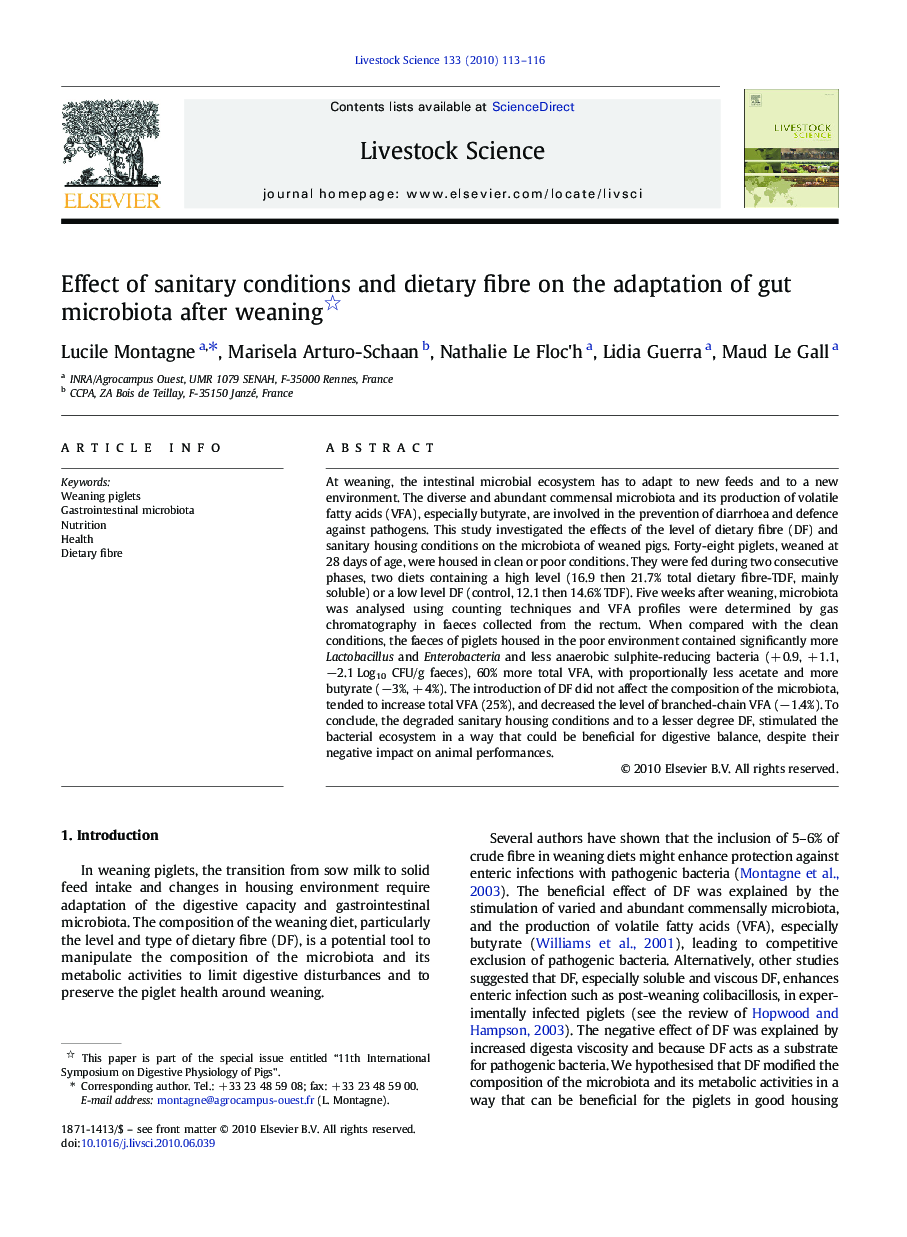| کد مقاله | کد نشریه | سال انتشار | مقاله انگلیسی | نسخه تمام متن |
|---|---|---|---|---|
| 2447702 | 1553999 | 2010 | 4 صفحه PDF | دانلود رایگان |
عنوان انگلیسی مقاله ISI
Effect of sanitary conditions and dietary fibre on the adaptation of gut microbiota after weaning
دانلود مقاله + سفارش ترجمه
دانلود مقاله ISI انگلیسی
رایگان برای ایرانیان
کلمات کلیدی
موضوعات مرتبط
علوم زیستی و بیوفناوری
علوم کشاورزی و بیولوژیک
علوم دامی و جانورشناسی
پیش نمایش صفحه اول مقاله

چکیده انگلیسی
At weaning, the intestinal microbial ecosystem has to adapt to new feeds and to a new environment. The diverse and abundant commensal microbiota and its production of volatile fatty acids (VFA), especially butyrate, are involved in the prevention of diarrhoea and defence against pathogens. This study investigated the effects of the level of dietary fibre (DF) and sanitary housing conditions on the microbiota of weaned pigs. Forty-eight piglets, weaned at 28Â days of age, were housed in clean or poor conditions. They were fed during two consecutive phases, two diets containing a high level (16.9 then 21.7% total dietary fibre-TDF, mainly soluble) or a low level DF (control, 12.1 then 14.6% TDF). Five weeks after weaning, microbiota was analysed using counting techniques and VFA profiles were determined by gas chromatography in faeces collected from the rectum. When compared with the clean conditions, the faeces of piglets housed in the poor environment contained significantly more Lactobacillus and Enterobacteria and less anaerobic sulphite-reducing bacteria (+Â 0.9, +Â 1.1, â2.1Â Log10 CFU/g faeces), 60% more total VFA, with proportionally less acetate and more butyrate (â3%, +Â 4%). The introduction of DF did not affect the composition of the microbiota, tended to increase total VFA (25%), and decreased the level of branched-chain VFA (â1.4%). To conclude, the degraded sanitary housing conditions and to a lesser degree DF, stimulated the bacterial ecosystem in a way that could be beneficial for digestive balance, despite their negative impact on animal performances.
ناشر
Database: Elsevier - ScienceDirect (ساینس دایرکت)
Journal: Livestock Science - Volume 133, Issues 1â3, September 2010, Pages 113-116
Journal: Livestock Science - Volume 133, Issues 1â3, September 2010, Pages 113-116
نویسندگان
Lucile Montagne, Marisela Arturo-Schaan, Nathalie Le Floc'h, Lidia Guerra, Maud Le Gall,